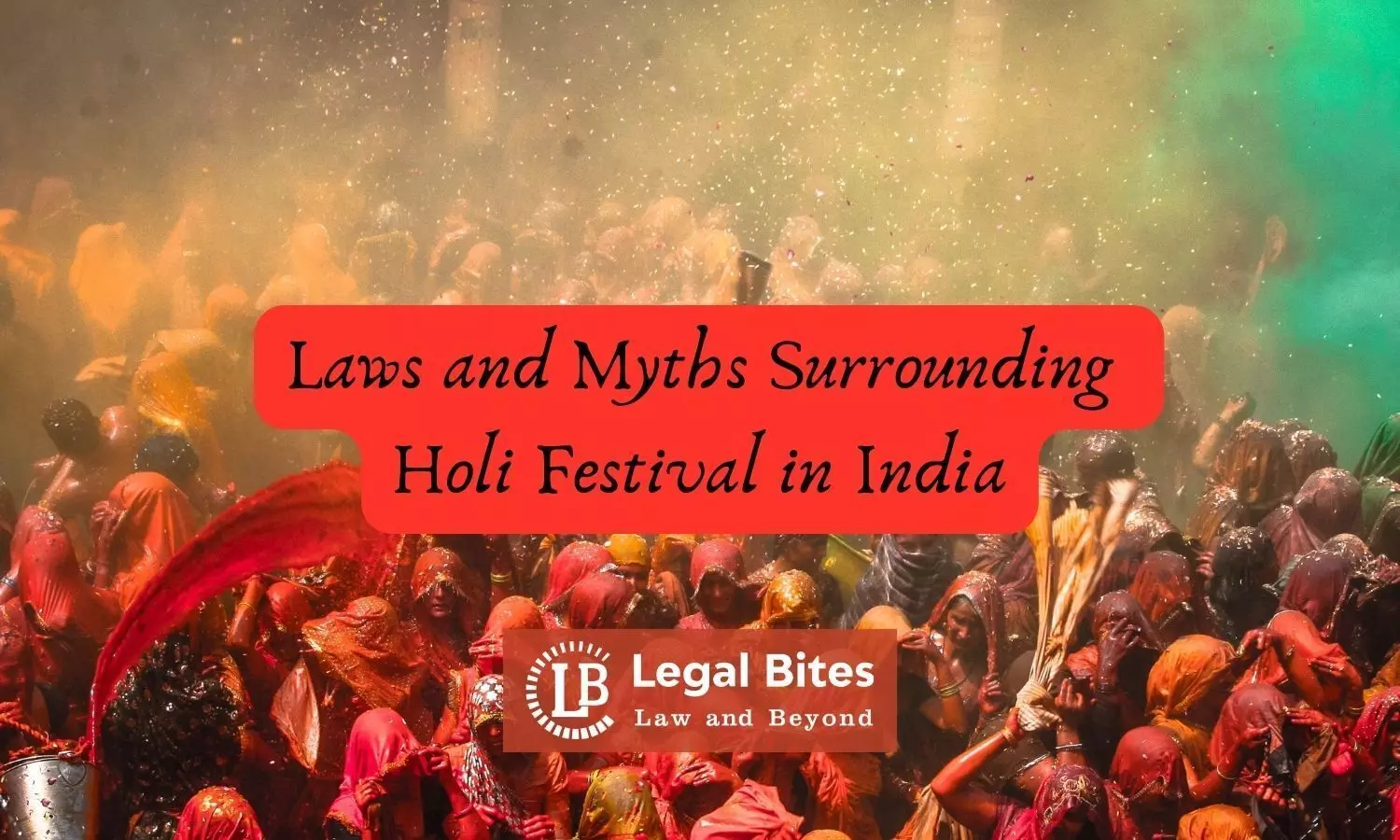Unravelling the Laws and Myths Surrounding Holi Festival in India: A Comprehensive Guide
Delve into the legal framework and cultural myths shaping the vibrant celebration of Holi in India.;

Delve into the legal framework and cultural myths shaping the vibrant celebration of Holi in India. Explore common misconceptions and legal nuances, ensuring a safe and enjoyable festival experience for all.
Holi, the festival of colours, is a jubilant occasion celebrated with immense fervour across India. Amidst the kaleidoscope of hues and joyous revelry, there lie both legal regulations and cultural myths that add layers of significance to this festive extravaganza.
Understanding the Laws
While Holi is a time for merrymaking, it's essential to be aware of the legal boundaries to ensure festivities remain safe and respectful. Various laws govern aspects of Holi celebrations, including noise pollution regulations, restrictions on harmful substances in colours, and guidelines for public gatherings.
1. "Bura Na Mano Holi Hai" Tradition
"Bura Na Mano Holi Hai" is a popular saying associated with Holi, often used to excuse playful mischief and pranks.
While the spirit of fun is encouraged, it's essential to ensure that actions remain within legal and respectful boundaries.
Respect personal boundaries and consent, avoiding any behaviour that could cause harm or discomfort to others.
2. Drinking and Driving
Consumption of alcohol is a common aspect of Holi celebrations for many individuals.
However, driving under the influence of alcohol is illegal and poses severe risks to oneself and others on the road.
Prioritize safety by designating a sober driver, using public transportation, or arranging for alternative transportation if alcohol will be consumed.
3. Gambling
In some communities, gambling or playing games of chance is a traditional part of Holi festivities.
It's essential to be aware of local laws regarding gambling and ensure that any activities remain within legal limits.
Exercise caution and moderation, refraining from engaging in activities that could lead to legal complications or financial harm.
4. Misconception: No FIR Is Lodged on Holi
There is a common misconception that law enforcement agencies do not accept or process First Information Reports (FIRs) during Holi festivities.
This belief can lead to the misunderstanding that individuals can engage in unlawful behavior without consequence during the festival.
In reality, law enforcement agencies operate throughout the festival period and are available to address any incidents or violations promptly.
It's important to understand that legal procedures, including lodging FIRs, remain in effect during Holi, and any criminal activities will be dealt with according to the law.
5. Noise Pollution Regulations
Many cities enforce strict regulations on noise levels during festivals, including Holi. It's vital to adhere to these guidelines to prevent disturbances to the public and maintain harmony in communities.
6. Safety Standards for Colors
The vibrant hues that adorn Holi celebrations often come from synthetic dyes, some of which may contain harmful chemicals. Authorities emphasize the use of organic or natural colors to ensure the safety of participants, especially children and those with sensitive skin.
7. Crowd Control Measures
In crowded areas, ensuring the safety and security of revellers becomes paramount. Authorities implement crowd control measures to prevent accidents and maintain orderliness during the festivities.
Dispelling Cultural Myths
Beyond the legal aspects, Holi is steeped in rich cultural mythology that adds depth to its celebration. However, it's essential to distinguish between folklore and reality to appreciate the festival's true essence.
1. The Legend of Holika Dahan
Holi commemorates the victory of good over evil, symbolized by the legend of Prahlad and Holika. Holika Dahan, the ritualistic burning of bonfires, signifies the triumph of righteousness and the vanquishing of malevolence.
2. Misconceptions About Bhang Consumption
While bhang, a traditional concoction made from cannabis, is often associated with Holi, its consumption is subject to legal restrictions in many regions. Understanding the legal implications and consuming bhang responsibly is crucial to avoid legal repercussions.
Conclusion
As we immerse ourselves in the vibrant festivities of Holi, it's imperative to navigate the legal landscape and cultural narratives surrounding this beloved festival. By upholding legal regulations and dispelling myths, we can ensure a joyous and harmonious celebration for all. Let's embrace the spirit of Holi while honouring its traditions and respecting the law.

